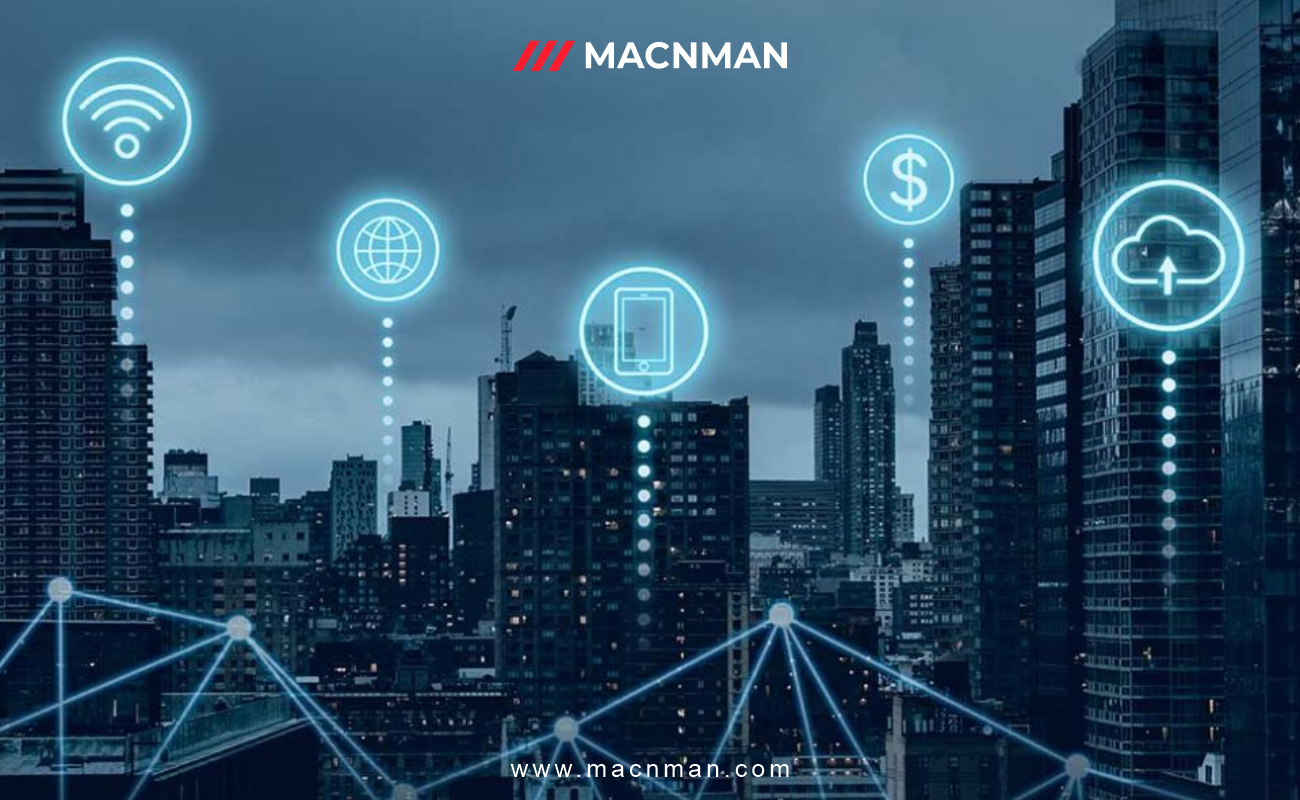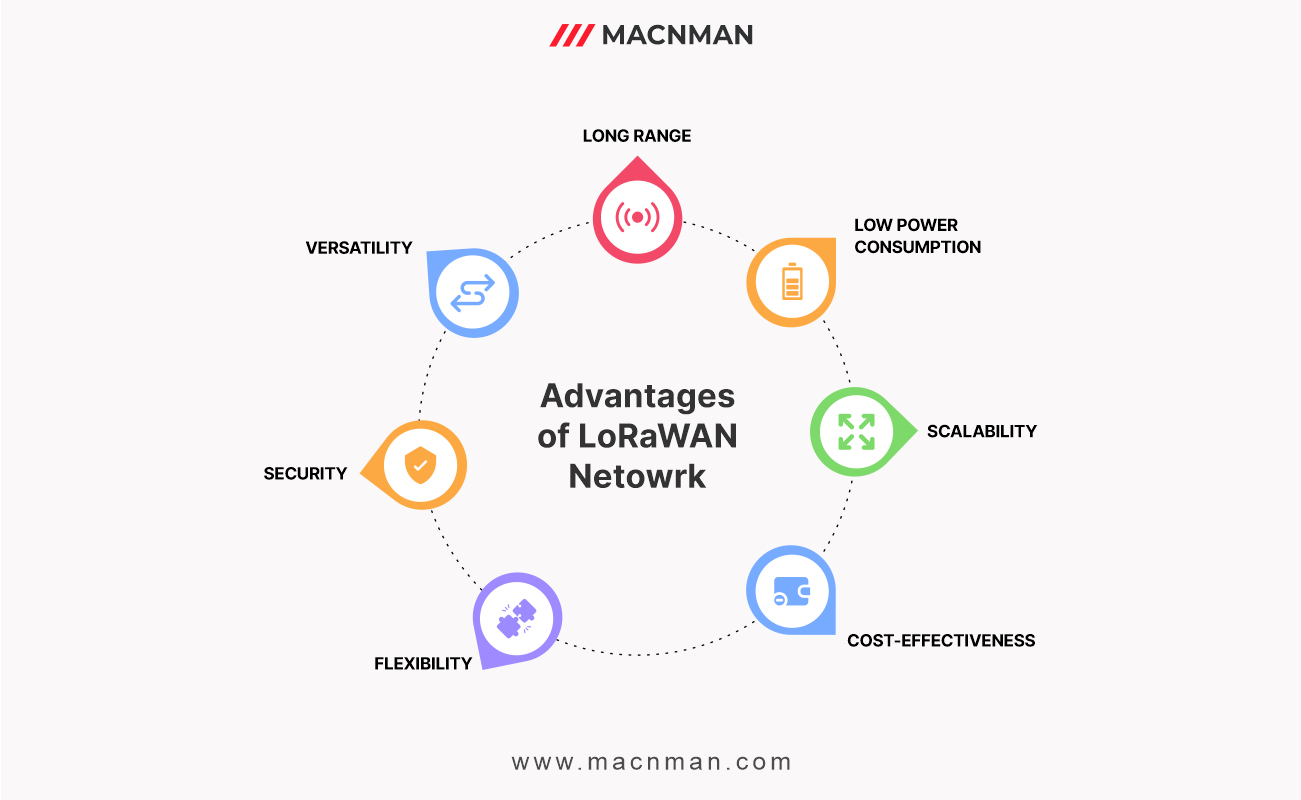
Introduction:
In the ever-evolving landscape of the Internet of Things (IoT), connectivity is the key that unlocks the potential of smart devices. One technology that has gained significant attention in recent years is LoRaWAN. Dynamic benefits of LoRaWAN technology makes it an ideal choice for a wide range of IoT applications. In this blog, we will delve into the meaning of LoRaWAN, explore its seven important benefits, and understand why it is revolutionizing the world of IoT industry.
Defining LoRaWAN :
LoRaWAN is a wireless communication protocol designed specifically for IoT devices. It operates in the sub-GHz frequency bands, enabling long-range communication with low data rates. This unique combination allows LoRaWAN to excel in scenarios where long battery life, low-cost connectivity, and the ability to transmit data over long distances are crucial.
7 Benefits of LoRaWAN technology:

Long Range: One of the most significant advantages of LoRaWAN technology is its devices have impressive range. With the ability to transmit signals over several kilometers in urban environments and even tens of kilometres in rural areas, LoRaWAN eliminates the need for extensive infrastructure and reduces deployment costs.
Low Power Consumption: LoRaWAN devices are renowned for their exceptional power efficiency. By leveraging low-power transmission and optimized communication protocols, IoT devices operating on LoRaWAN can operate on battery power for several years. This feature is particularly valuable in remote or inaccessible locations where frequent battery replacement or recharging is impractical.
Scalability: LoRaWAN networks offer exceptional scalability, accommodating a vast number of IoT devices. The star-of-stars network topology, where gateways act as intermediaries between end devices and a central network server, allows for seamless expansion and management of device connections. This flexibility ensures that LoRaWAN networks can adapt to the growing demands of IoT applications.
Cost-Effectiveness: When it comes to cost, LoRaWAN technology shines. The long-range capabilities significantly reduce the number of gateways required to cover a large area, thereby lowering infrastructure costs. Moreover, the low power consumption of LoRaWAN devices translates into extended battery life, reducing operational expenses and improving the overall cost-effectiveness of IoT deployments.
Flexibility: LoRaWAN supports both public and private network deployments, offering flexibility to IoT solution providers. Public LoRaWAN networks, operated by network service providers, provide a ready-to-use infrastructure for IoT connectivity. Private LoRaWAN networks, on the other hand, allow organizations to maintain complete control over their network, enabling enhanced security and customization options.
Security: Security is a paramount concern for IoT devices, and LoRaWAN addresses this through robust security measures. LoRaWAN devices ensure the confidentiality and integrity of data transmitted between devices and gateways, guarding against unauthorized access and data tampering. Furthermore, LoRaWAN supports secure devices on boarding methods, such as over-the-air activation and activation by personalization, adding an extra layer of security to the network.
Versatility: LoRaWAN technology offers versatility, making it suitable for a wide array of IoT devices or applications. From smart cities & agriculture to asset tracking and environmental monitoring, the long-range and low-power characteristics of LoRaWAN empower diverse industries to leverage IoT connectivity effectively. Its ability to support various sensor types and data rates further enhances its versatility and adaptability.
Conclusion
In conclusion, LoRaWAN technology stands at the forefront of IoT connectivity, providing a comprehensive set of advantages that propel the growth and adoption of IoT applications across diverse industries. Its long-range capabilities & other benefits of LoRaWAN technology ensure that IoT devices can communicate seamlessly over extensive distances, making it an ideal choice for smart city deployments, precision agriculture, asset tracking, environmental monitoring, and more.